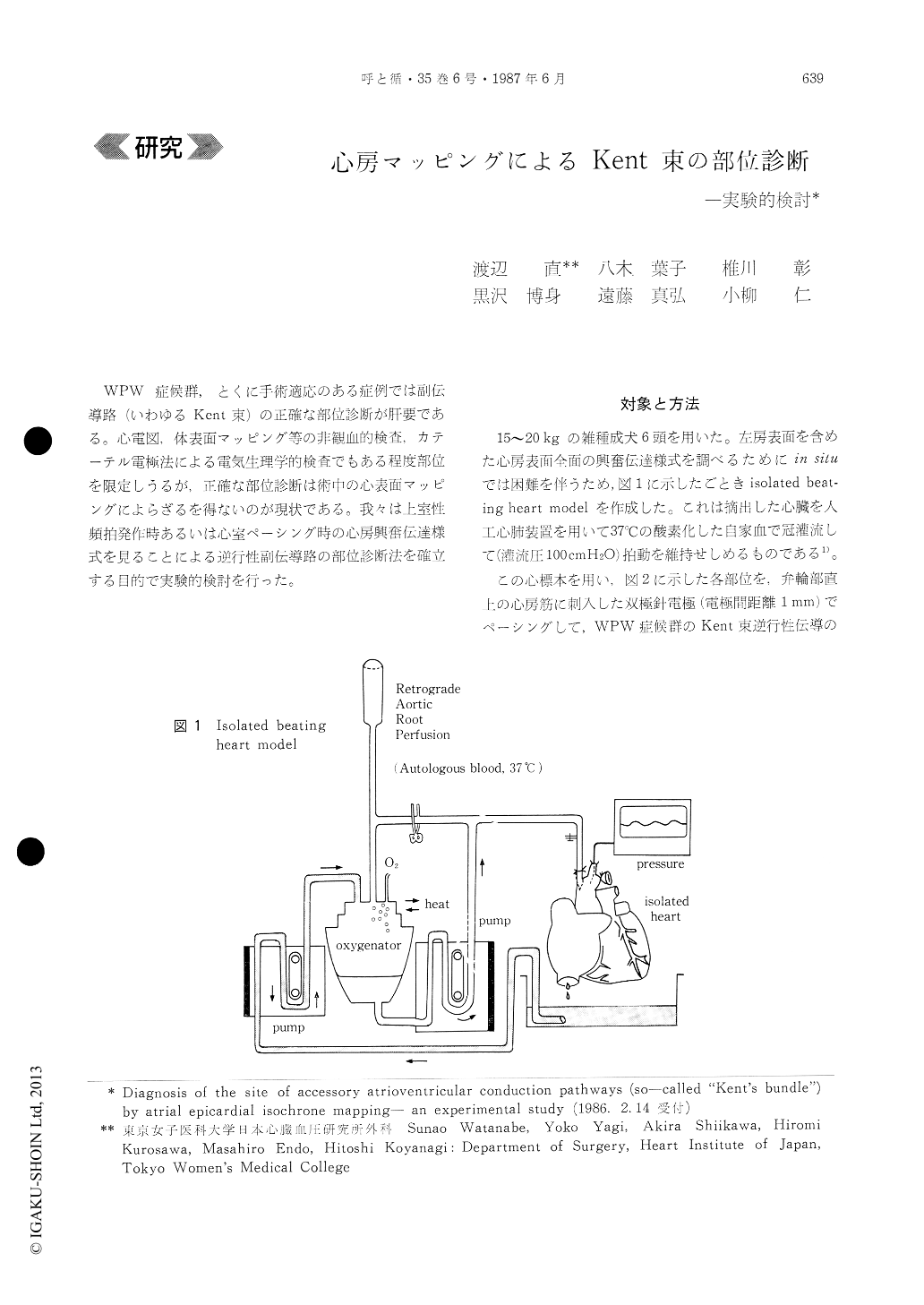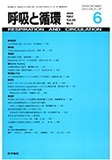Japanese
English
- 有料閲覧
- Abstract 文献概要
- 1ページ目 Look Inside
WPW症候群,とくに手術適応のある症例では副伝導路(いわゆるKent束)の正確な部位診断が肝要である。心電図,体表面マッピング等の非観血的検査,カテーテル電極法による電気生理学的検査でもある程度部位を限定しうるが,正確な部位診断は術中の心表面マッピングによらざるを得ないのが現状である。我々は上室性頻拍発作時あるいは心室ペーシング時の心房興奮伝達様式を見ることによる逆行性副伝導路の部位診断法を確立する目的で実験的検討を行った。
In order to clarify the pattern of spread of the retrogradely conducted impulse through the acces-sory atrioventricular pathways, we performed an experimental study using isolated beating hearts of six mongrel dogs in which retrograde conduction was simulated by means of pacing the atrium by stimulating various points of juxta-annular atrial myocardium, and atrial isochrone maps were made by measuring the impulse arrival times of predeter-mined 45 points on the atrial surface.
In right free wall types, impulse spread from the site of "Kent's bundle" radially to the right atrial surface. In right anterior and lateral free wall types, right appendage excited 15-30 msec, and 5-15 msec, respectively, earlier than left appendage. In right posterior free wall type, both appendages excited almost at the same time.
In left free wall types, impulse reached from the earliest excitation points on the lowermost portion of the left atrial epicardium via right and left routes to the right atrium ; the right route through the interatrial groove to the right side of right atrium, and the left route through Bachmann's bundle to the left upper right atrium. In left anterior and lateral free wall types, left appendage excited 25-40 msec, and 15-30 msec, respectively, earlier than right appendage. In left posterior free wall type, both appendages excited almost at the same time.
In posterior septal type, the earliest excitation point was located along the sulcus terminalis. Both appendages excited almost at the same time. From these findings, we concluded that the site of acces-sory conduction pathway could be determined by the combination of right epicardial isochrone map patterns and the time relationship of right and left appendage excitation.

Copyright © 1987, Igaku-Shoin Ltd. All rights reserved.


